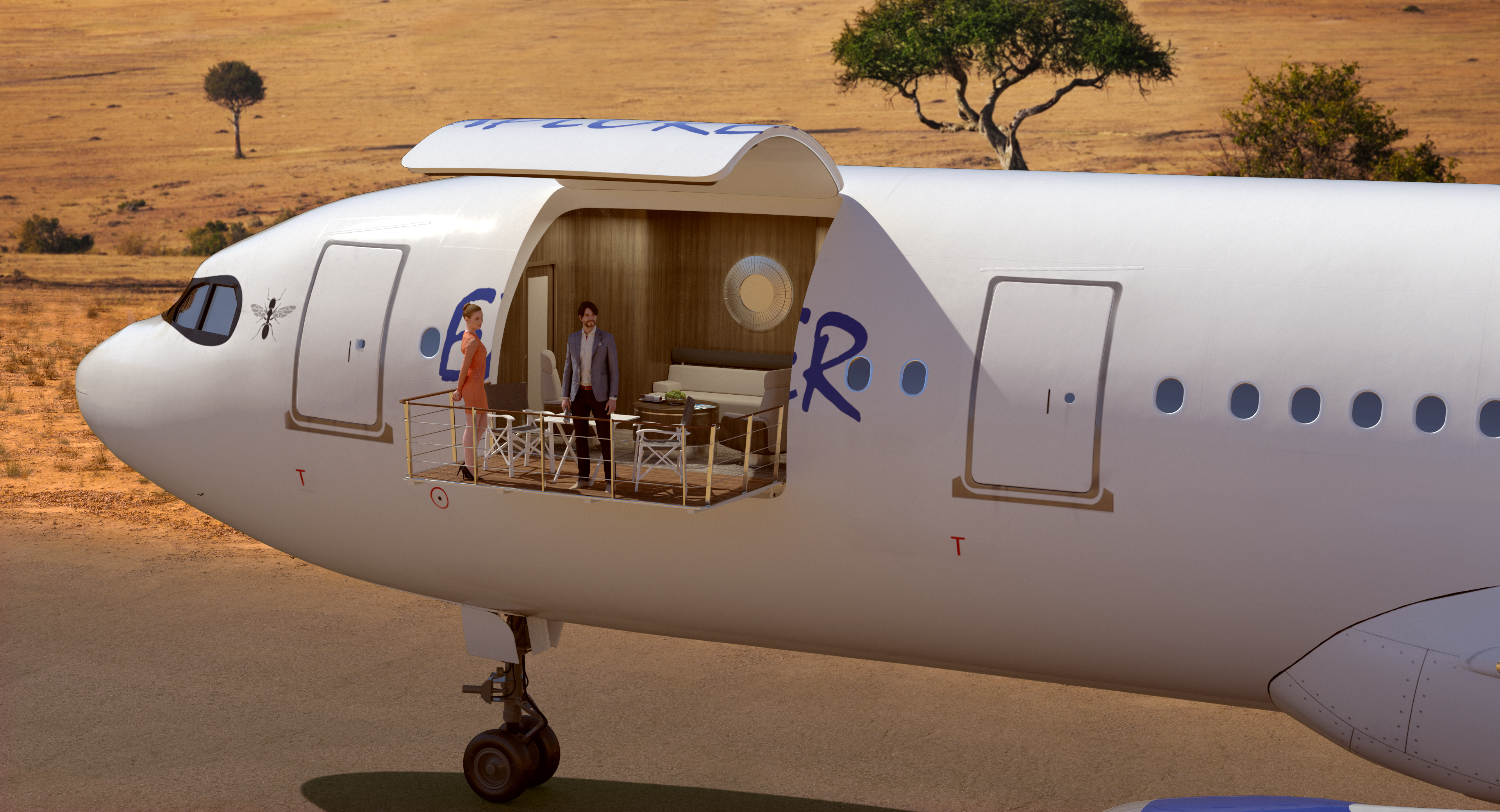Lufthansa Technik's Explorer Concept will have your head in the clouds
An elaborate concept interior for the Airbus ACJ330, the Explorer Concept is a roaming hotel suite


There’s only one area of design where vast budgets and stringent requirements outstrip the sheer insanity of the superyacht industry, and that’s private aviation. But what happens when you blend the aspirations of the former with the rigorous demands of the latter? German fit-out specialists Lufthansa Technik believe they have the answer. Their new Explorer Concept went on display at this month’s Dubai Air Show. Inspired by the burgeoning trend for expedition-style superyachts that add a layer of rugged capability to the luxury, allowing owners and charter customers to go anywhere they please on the globe, the Explorer Concept is designed to invoke wanderlust on a grand scale.

Located at Hamburg Airport, Lufthansa Technik is one of the world’s leading specialists in private jet fit outs, taking ‘green’ aircraft flown in from their various factories before the highly skilled teams get to work transforming the interior space. The Explorer Concept is based on the twin-engine Airbus Corporate Jet ACJ330. In its most recent ‘neo’ configuration, the ACJ has an impressive range of over 10,000 nautical miles and is relatively economic to operate (for an airliner). The aircraft is closely related to the familiar A330 airliner, of which there are nearly 1,500 in operation around the world. An airline-spec A330neo can cost as much as $290m, but the sky is literally the limit in the land of custom fit outs.

The Explorer’s cabin is specifically designed to exploit the extra space of a widebody jet and results in what is effectively a flying hotel. This is a multifunctional concept, intended to whet the appetite of potential buyers, with conceptual ideas that go way above and beyond convention. That’s not to say it is in poor taste. There have been more than enough flying homages to French chateaux or Mayfair mansions in the past: this is an interior with more space age ambitions.

The stand-out feature is the canopy integrated into the fuselage, essentially a cargo hatch transformed into a projecting balcony. Raised up four metres above the tarmac, it’s intended to open the aircraft up to its surroundings, presuming you get the chance to park up on the edge of an especially scenic airfield. The cost-conscious should not that if you start with a cargo variant of the aircraft you might even have a hatch that’s ready for conversion. If not, Lufthansa Technik can retrofit the item into the regular plane.

The floorplan on display offers four ensuite cabins, in addition to a gym, grand dining or conference room, informal seating area, bar, and break-out meeting room. Lufthansa Technik expects this kind of craft to accommodate between 8 to 12 passengers, plus crew, which is a step down from the 277 people squeezed into the airline version. The cargo deck is given over to a copious garage, with the option of also including a ‘wine cellar, exploration laboratory or even an emergency medical room,’ in keeping with the Explorer name. A future collaboration with Mercedes’ specialists BRABUS will explore the idea of a glass floor set above a Luxury Mobility Lounge, allowing you to gaze down longingly at the four- (and six-) wheeled vehicles you’ll be using when you land.

Aside from the hatch, the aircraft’s other party trick is its integration of a ceiling projection system, developed by the German company Diehl Aerospace. With screens that run the length of the cabin, Diehl’s software can be mapped to external cameras for a view of the clouds, transform the space into a one percenter’s disco, or simply switch out the backdrop for something suitably grandiose, such as a giant aquarium or even the far reaches of space. Private aviation is a secretive world, and should someone greenlight the Explorer Concept, it’s unlikely we’ll ever get a tour. These renders are the best chance you’ll get.
Read more at lufthansa-technik.com/explorer.
Get all the latest news, reviews, deals and buying guides on gorgeous tech, home and active products from the T3 experts


This article is part of The T3 Edit, a collaboration between T3 and Wallpaper* which explores the very best blends of design, craft, and technology. Wallpaper* magazine is the world’s leading authority on contemporary design and The T3 Edit is your essential guide to what’s new and what’s next.

Jonathan Bell is Wallpaper* magazine’s Transport and Technology Editor, a role that encompasses everything from product design to automobiles, architecture, superyachts, and gadgets. He has also written a number of books, including Concept Car Design, 21st Century House, and The New Modern House. His interests include art, music, and all forms of ephemera. He lives in South London with his family.
